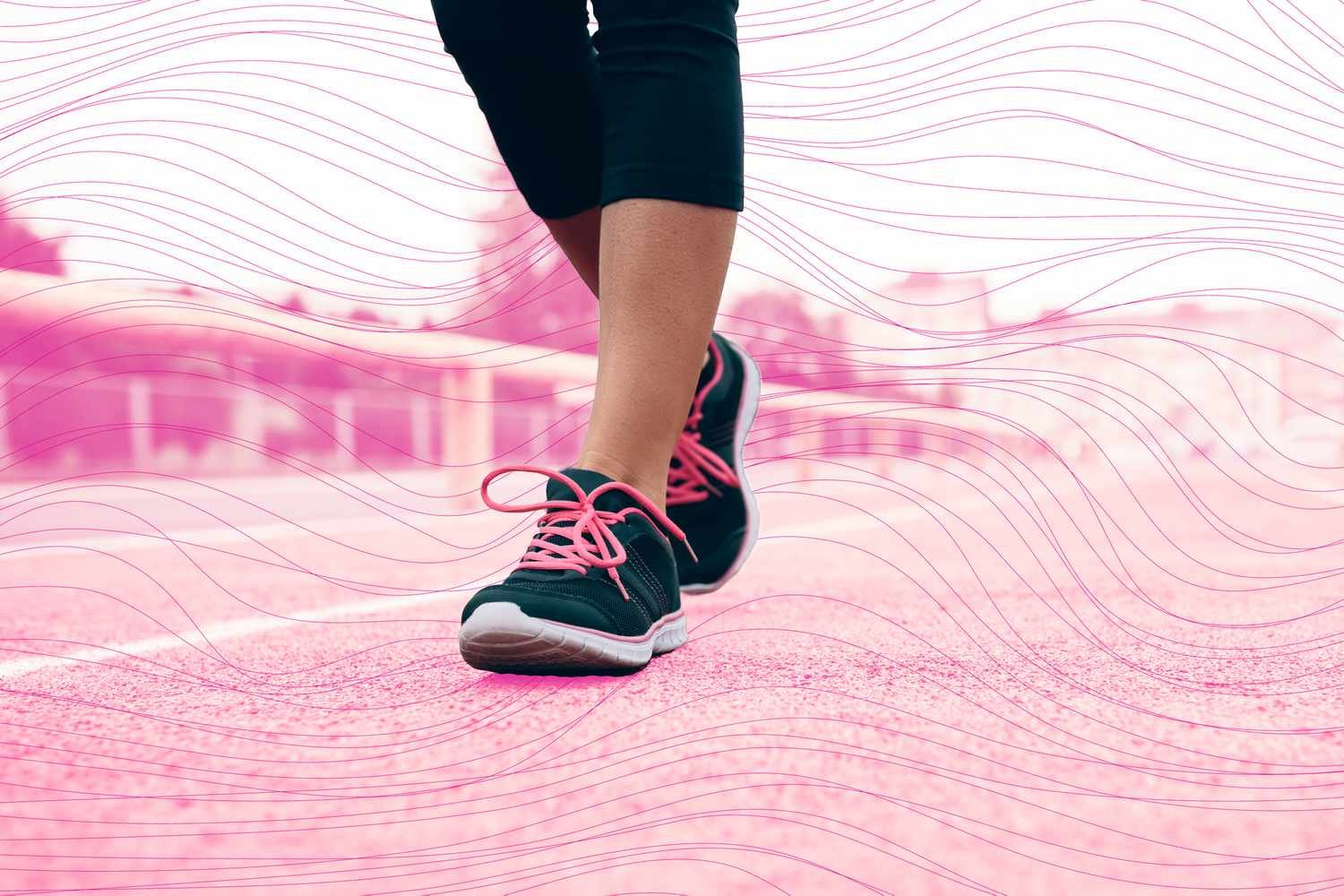Events
How to Choose the Best Walking Shoe for Diabetes

- Walking can be a helpful way for people with diabetes to help manage blood sugar.
- Choosing the right shoes is key for preventing infection, blisters, ulcers and more.
- Podiatrists say focusing on small details when shoe shopping can make a big difference.
If you have diabetes, your blood sugar levels aren’t the only thing you want to monitor. It’s important to take care of your feet, too. Foot health is imperative for preventing complications down the road, such as calluses, blisters and sores that can lead to potential infection, says podiatrist Lori Grant, DPM.
At the same time, walking is a great activity if you have diabetes. In addition to helping manage blood sugar, walking can also promote a healthy body weight, improve blood pressure and cholesterol and reduce stress.
But it’s not just about lacing up any old walking shoe. The shoes you choose can make a big difference, say podiatrists. To get the most out of your walking routine, here are podiatrists’ top tips for shopping for the best walking shoes.
Choose the Right Fit
Shoes that don’t fit well can contribute to ulcers from increased friction and hammer toes (a deformity where the toe bends upward at the middle joint). Given that people with diabetes can have diminished sensation in their feet, this irritation may go unnoticed until it creates a problem, says podiatrist Samantha Landau, DPM.
When it comes to the length of the shoe, make sure your toes do not touch the tip of the shoe, says Landau. Your longest toe (which may not be your big toe) should be one finger width away from the tip of the shoe, she says. This gives you extra room for feet to move but not so much room that they slide around. If your shoe feels too small, Grant recommends going up a half size. If, however, the shoe feels too tight (you’ll know because your toes will feel too cramped), stick with the same size but go for a wider shoe. Also, remember that shoe fit varies among brands.
Aim for a Wider Toe Box
Speaking of shoes being cramped at the toe, podiatrist Michael Owens, DPM, recommends honing in on the toe box, which is the area of the shoes where your toes sit. “A roomy toe box prevents pressure and friction on the toes, which helps reduce the risk of blisters, calluses and ulcers—particularly important if you have any deformities or neuropathy,” he explains. Look for a shoe with a toe box that is wide enough to comfortably wiggle your toes.
Go for a Soft Material
Many people tend to gravitate toward leather walking shoes, which take more time to break in and can promote sweating, says Grant. Yet, more forgiving materials, such as mesh, allow feet to comfortably move and breathe, she adds. “Softer materials, in general, are more forgiving and decrease the risk of rubbing,” she explains. A soft, breathable material is especially important if you are someone who has a hammer toe since a toe that cocks upward is more apt to rub up against the shoe.
Check the Stitching
When you’re in the store, pick up a shoe that you like. Then, run your hand inside the toe box. “If you can feel a seam or stitching, know that this can end up causing rubbing and then blisters,” says Grant. Look for another pair of shoes, ideally one with a smooth toe box on the inside.
Look for Good Cushioning
Shoes should feel well-cushioned. “I like a walking shoe with adequate cushioning in the heel and under the balls of the feet and is supportive and breathable,” says podiatrist Peter Lovato, DPM. Make sure that you’re trying on shoes in-store to get a feel of how much cushioning support a pair offers. Don’t forget to walk around the store wearing both shoes to see how they feel.
Shop Strategically
Your foot size can change—even if it’s held steady for years (or decades!). “It’s advisable to get your feet measured regularly,” says Owens. “Footwear should be seen as part of your medical equipment, not just a fashion choice.” He also recommends shopping for shoes later in the day, as feet are more swollen at this time compared to the morning. In addition, wear the socks that you intend to wear when walking. This will ensure a better fit no matter what time of day you go for a walk.
How Walking Can Improve Blood Sugar
Exercise, like walking, improves insulin sensitivity, which allows your muscle cells to soak up glucose from your bloodstream. This can help lower your blood sugar during and after activity. While any walk is a bonus, brisk walking is considered a moderate-intensity aerobic activity. So, the faster you step things up, the better. If you’re wondering how much you should walk, the Centers for Disease Control and Prevention recommends a total of 150 minutes per week. Feel free to break that down any way you like, even into several shorter walks throughout the day.
A walking routine at any time of the day is a positive habit when you have diabetes. If you’d like to kick the benefits up a notch, try walking after a meal. Research has found that post-meal exercising, such as walking, effectively blunts the rise in blood sugar that occurs after eating better than pre-meal physical activity or remaining inactive. For instance, a meta-analysis of eight randomized controlled trials found that walking right after a meal lowered blood sugar more effectively than later exercise. The best timing for this is within 30 minutes after meals, though waiting more than two hours can still benefit your blood sugar. In fact, exercise can improve blood sugar for 24 hours after a workout, which is why a regular walking routine like our 7-Day Walking Plan to Lower Your Blood Sugar Levels can be impactful for your diabetes management and overall health.
The Bottom Line
The take-home message: no matter when you walk, it’s good for your blood glucose levels. A good, well-fitting walking shoe can make all the difference. Use our podiatrist-recommended tips and consider getting fitted by a professional to find a sneaker that works for you.







